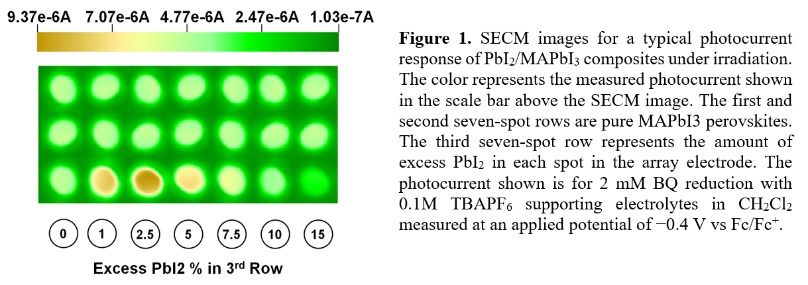Sam HY HSU
City University of Hong Kong, China
Title: Photoelectrochemical characterization of lead-based hybrid perovskite semiconductors
Biography
Biography: Sam HY HSU
Abstract
A variety of PbI2/MAPbI3 perovskites were prepared and investigated by a rapid screening technique utilizing a modiï¬ed scanning electrochemical microscope (SECM) in order to determine how excess PbI2 affects its photoelectrochemical (PEC) properties. An optimum ratio of 2.5% PbI2/MAPbI3 was found to enhance photocurrent over pristine MAPbI3 on a spot array electrode under irradiation. With bulk ï¬lms of various PbI2/MAPbI3 composites prepared by a spin-coating technique of mixed precursors and a one-step annealing process, the 2.5% PbI2/MAPbI3 produced an increases photocurrent density compared to pristine MAPbI3 for 2mM benzoquinone (BQ) reduction at − 0.4 V vs Fc/Fc+. As a result of the relatively high quantum yield of MAPbI3, a time-resolved photoluminescence quenching experiment could be applied to determine electron-hole diffusion coefficients and diffusion lengths of PbI2/MAPbI3 composites, respectively. The diffusion coefficients combined with the exciton lifetime of the pristine 2.5% PbI2/MAPbI3 (τPL = 103.3 ns) give the electron and hole exciton diffusion lengths, ~ 300 nm. Thus, the 2.5% PbI2/MAPbI3 led to an approximately 3.0-fold increase in the diffusion length compared to a previous report of ~ 100 nm for the pristine MAPbI3 perovskite. We then demonstrated that the efficiency of liquid-junction solar cells for 2.5% excess PbI2 of p-MAPbI3 was improved from 6.0% to 7.3%.


